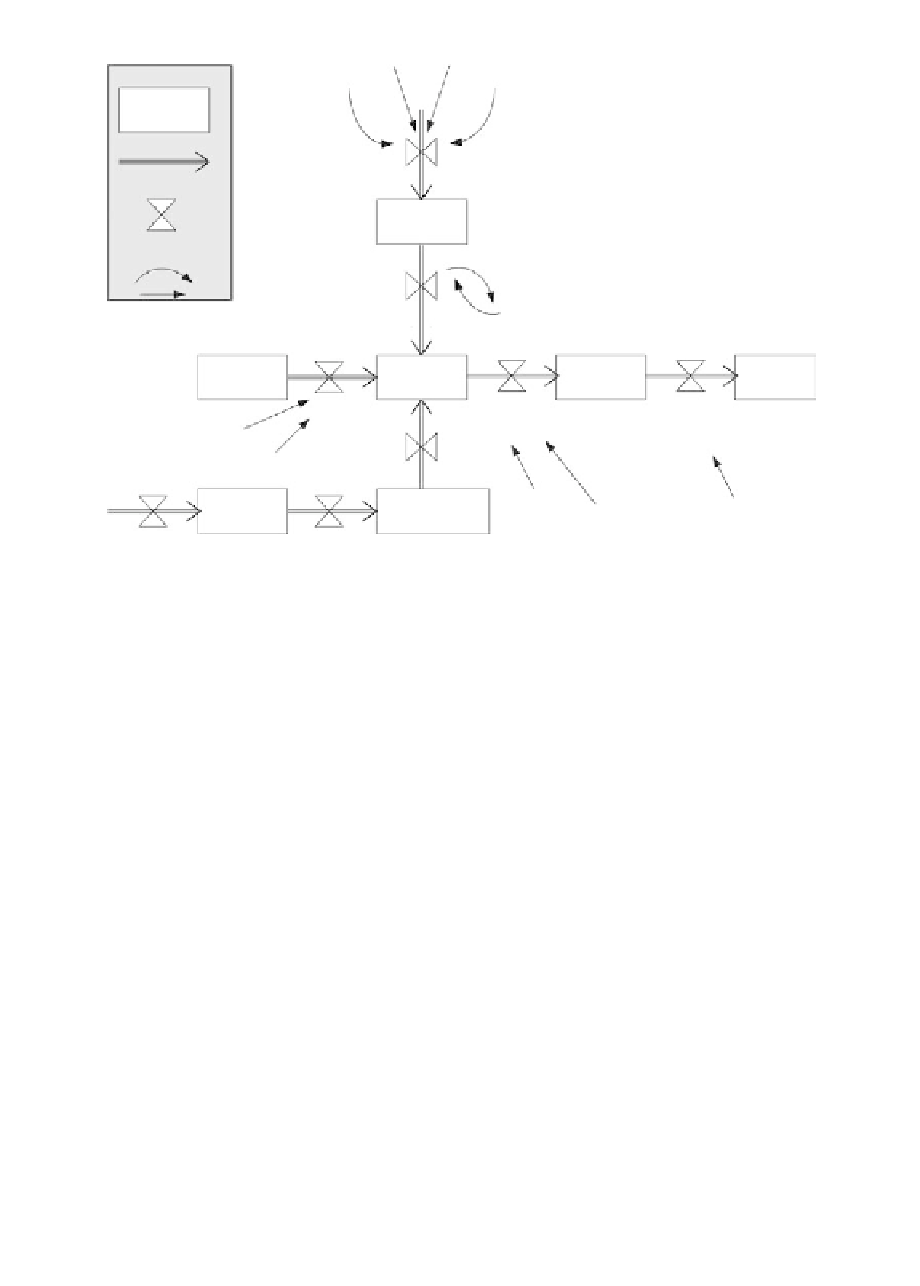Information Technology Reference
In-Depth Information
Method
Motivation
Mission
Symbol Key
Means
Stock
Flow
New
hreats
hreat
Space
Flow Control
Flow Control
Influences
Viable
hreats
Potential
Risk
Probable
Risks
Priority
Risks
IA Budget
New IA
Budget
Priorities
New
Risks
New Priority
Risks
Risk Awareness
Risk Probabilities
Asset
Space
Asset
Vulnerabilities
Risk Analysis
Assess Certainty
and Confidence
Assess Scope of
Control
Acquisition/
Development
Production
Assets
Figure 14.2
Systems dynamics of risk.
14.3.5
Constants and Variables
Complexity management is a major constraint in considering the future, espe-
cially in terms of architecture. Architecture produces tangible results that quickly
show the accuracy of future considerations. Distinguishing constants and variables
promotes complexity reduction. Constants include laws of physics, laws of nature
(though stretchable with genetic engineering), human psychology, and human
behavior, the latter falling into predictable patterns. Variables include specific tech-
nical mechanisms that may be popular or useful today, but are replaced quickly
with new developments.
14.3.6
Summary of IA Future Vision
Any prediction has a degree of uncertainty from the start, as Figure 14.3 shows.
Uncertainty increases exponentially as time increases. There is a tremendous
amount of money spent on attempting to minimize uncertainty. We pay a fortune
to professional investment managers because they must have more accurate meth-
ods to predict the financial performance of companies and markets—don't they?
Governments invest under the assumption that more knowledge equals better deci-
sions; therefore, let us have bigger, better, faster networks to exchange information.





